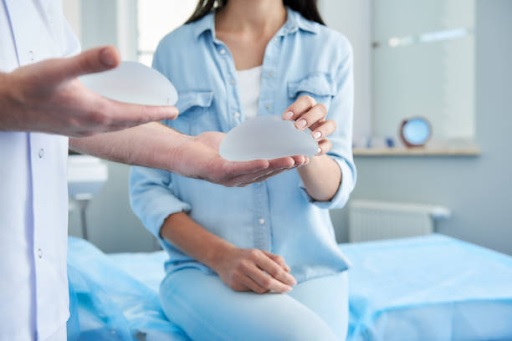Redefining Confidence: An In-Depth Look at Breast Implants

Breast implants have become an increasingly popular choice for individuals seeking to enhance their physical appearance and boost their self-esteem. This surgical procedure offers a pathway for many to achieve their desired breast size and shape, catering to various aesthetic goals. In recent years, advancements in technology and techniques have made breast implant procedures safer and more effective than ever. This article explores what breast implants are, the different types available, the surgical process, recovery, and important considerations for those contemplating this transformative option.
Types of Breast Implants
When considering breast augmentation, it is essential to understand the different types of breast implants available. Each option has its unique features, advantages, and considerations:
Saline Implants: Saline implants consist of a silicone outer shell filled with sterile saltwater. These implants can be inserted while empty and filled once in place, allowing for smaller incisions. Saline implants offer a uniform shape and firmness. However, some individuals may find that saline implants do not provide the same natural feel as silicone implants.
Silicone Implants: Silicone implants are pre-filled with a cohesive gel that closely resembles the feel of natural breast tissue. Many women prefer silicone implants due to their more natural look and texture. They are available in various shapes and sizes, allowing for a personalised approach to breast augmentation. While silicone implants require larger incisions, their realistic appearance often outweighs this concern for many patients.
Gummy Bear Implants: These implants are a type of silicone implant that maintains its shape even if the outer shell ruptures. The cohesive gel inside is thicker than traditional silicone gel, providing a firmer feel and a more natural shape. Gummy bear implants are designed to stay in place, which can help prevent complications associated with shifting or movement.
Textured vs. Smooth Implants: Breast implants also come in textured and smooth options. Textured implants are designed to adhere to the surrounding tissue, reducing the risk of capsular contracture, a condition where scar tissue forms around the implant. Smooth implants, on the other hand, can move freely within the breast pocket, which may create a more natural movement but may have a higher risk of shifting.
The Surgical Procedure
Before undergoing breast augmentation, it is vital to consult with a qualified plastic surgeon to discuss individual goals and expectations. During the consultation, the surgeon will assess the patient’s medical history, conduct a physical examination, and provide recommendations for the most suitable implant type and surgical technique.
On the day of the procedure, patients will typically receive general anaesthesia or sedation to ensure comfort during surgery. The surgical process generally involves the following steps:
- Incision: The surgeon will make incisions in discreet locations to minimise scarring. Common incision sites include under the breast (inframammary fold), around the nipple (periareolar), or in the armpit (transaxillary). The choice of incision location depends on the type of implant, the patient’s anatomy, and the surgeon’s preference.
- Implant Placement: Once the incisions are made, the surgeon will create a pocket either under the breast tissue (subglandular) or beneath the chest muscle (submuscular) to place the implants. The decision on placement location will depend on the patient’s body type, lifestyle, and aesthetic goals.
- Closing the Incisions: After positioning the implants, the surgeon will carefully close the incisions with sutures, skin adhesives, or surgical tape.
The entire procedure typically lasts between one to two hours, and patients are usually monitored in a recovery area before being discharged.
Recovery and Aftercare
Recovery after breast augmentation is an essential aspect of the surgical journey. Patients can expect some discomfort, swelling, and bruising in the initial days following the procedure. However, most women find that these symptoms improve significantly within a week. To ensure a smooth recovery, it is crucial to follow the surgeon’s aftercare instructions, which may include:
- Wearing a Supportive Bra: A post-operative bra is often recommended to provide support and help reduce swelling.
- Avoiding Strenuous Activity: Patients should refrain from heavy lifting or vigorous exercise for several weeks to allow for proper healing.
- Managing Pain: Pain relief medications may be prescribed to help manage discomfort during the recovery period.
- Attending Follow-Up Appointments: Regular follow-up visits with the surgeon are crucial for monitoring recovery and addressing any concerns.
During the recovery period, patients need to be aware of potential complications, such as infection, implant rupture, or capsular contracture. While these risks are relatively low, maintaining open communication with the surgeon can help address any issues promptly.
The Psychological Impact of Breast Implants
While breast implants can enhance physical appearance, it is also essential to consider the psychological aspects. Many women report increased self-esteem and body confidence following the procedure. However, it is crucial to have realistic expectations and recognise that surgery is not a solution for underlying issues related to self-image.
Engaging in open conversations with friends, family, or mental health professionals can help individuals navigate the emotional journey associated with breast augmentation. Support systems play a vital role in ensuring a positive experience and outcome.
Longevity and Maintenance of Breast Implants
Breast implants are not considered lifetime devices. While many patients experience long-lasting results, the implants may eventually need to be replaced or removed. Factors influencing the lifespan of breast implants include:
- Natural Ageing: As individuals age, the skin may lose elasticity, affecting the appearance of the breasts.
- Changes in Body Weight: Significant weight loss or gain can impact breast size and shape, potentially necessitating further surgical intervention.
- Complications: Issues such as capsular contracture, implant rupture, or aesthetic concerns may require additional procedures.
Regular check-ups with a qualified surgeon are essential for monitoring breast implants and addressing any potential concerns.
Conclusion
Breast implants offer a transformative option for individuals seeking to enhance their appearance and boost their confidence. With various implant types and surgical techniques available, individuals can tailor their approach to achieve their desired results.
Understanding the surgical procedure, the recovery process and the importance of choosing a qualified surgeon is crucial for anyone considering this transformative experience. By prioritising education and self-awareness, individuals can embark on their breast augmentation journey with confidence, ultimately leading to improved self-esteem and a positive body image.












